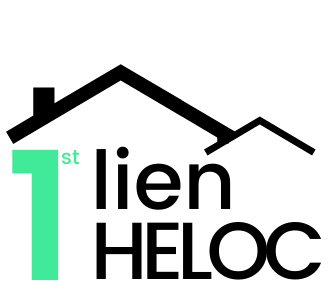Benefits of using a 1st Lien HELOC for Retirement
Updated as of January 15, 2024 | FirstLienHELOC.com
Good to Know
As adults grow older and begin planning for retirement, they often overlook one of the most readily available cash sources – their home. Some reports estimate there is more than $6-trillion worth of equity stored up in the homes of people over the age of 62. If you’re one of the millions of people nearing retirement age, a home equity line of credit might be a good consideration in your retirement planning.
A first lien HELOC (Home Equity Line of Credit) is a mortgage and a line of credit combined. It replaces your existing mortgage, if you have one, and gives you access to cash to consolidate debts, pay medical bills, or other financial needs. Read on and learn how to make this financial instrument part of your retirement plan.
Transitioning into retirement means changing from wealth accumulation to wealth distribution. For many, this can be a scary process, and can come with sudden surprises. If you’ve been well prepared, you may be able to coast into retirement more easily than others, due to greater preparation.
If you’re preserving your nest egg, why would it make sense to have a 1st Lien HELOC? Consider this.
Avoiding financial hurdles and taxable events
If you keep the majority of your net worth in some form of illiquid investment, say in stocks or real estate (or both), then any emergency situation or new opportunity could result in having to liquify your assets, paying fees and taxes along the way.
By having a paid off or paid down 1st Lien HELOC on your home, you have a low-fee and no taxable income method of quickly accessing capital. Whether home improvements, medical emergencies, or gifts for the grand kids, you won’t have to worry about financial logistics and taxable events.
Upgrading to your forever home
One of the most common uses for HELOC funds is home improvements. Now that you’re nearing retirement, this is a good time to enhance your home for the rest of your life. Nearly 2/3 of retirees are living in the home they love most. They don’t have plans to move, but they want to make sure it is equipped for their later years. You can use the money from a HELOC to remodel the kitchen or family room, build an addition, or create more outdoor recreation spaces.
- Making these enhancements with a HELOC means you aren’t making renovations with a credit card and paying high interest. Credit card interest can reach double-digits, and that is much higher than the interest you’ll pay on a line of credit from your home equity. If you aren’t planning on moving, using a HELOC to upgrade your home makes good financial sense.
- You can also use a HELOC to bridge the gap in your retirement financial planning. For example, if you retire early, you could incur a significant penalty for withdrawing funds from your retirement plan before a certain age. Instead, you can use your HELOC to cover some of your early retirement expenses until you reach the requisite age.
- Make sure you discuss this strategy with your financial planner or accountant. It’s an easy way to bridge a financial gap, but you want to have a plan in place to pay back the HELOC.
Consolidating Debt in Retirement
Millions of retiring seniors still have a mortgage, student debt, or unsecured debt like credit cards. This can put you in the position of playing catch-up and can make retirement stressful. If you’re one of the millions of people entering retirement with a mortgage and other debts, a first lien HELOC can help!
When you replace your existing mortgage with a first lien HELOC, you can consolidate your existing debt into a single payment with lower interest. You can pay off other debts like your car, student loans, or credit cards. If you are trying to reduce debt in your estate planning, a HELOC can help.
There are tax benefits associated with a HELOC, as well. If you’ve been paying on your mortgage for 10-15 years, you may have already paid most of the interest on the loan. You’re likely unable to deduct your mortgage interest from your income tax.
However, with a first lien HELOC, you can deduct the interest from your new mortgage on your income tax return.
As we grow older, there are unexpected expenses like medical bills or home repairs. With a HELOC, you have access to cash to pay these expenses without going deeper into debt with a credit card company. A first lien home equity line of credit can make a big difference in your financial stability during retirement.
Use a HELOC for Investments
Use a HELOC for Investments
The equity stored up in your home can be used to prepare you for retirement better. A first lien HELOC can replace your current mortgage and give you access to the cash you need for home improvements, debt consolidation, or real estate investments. Millions of people retire with excess debt, but a HELOC can relieve some of that debt and the stress that goes with it. If you are interested in exploring whether a first lien HELOC is right for you, visit our website to pre-qualify. We will help you determine a plan for your financial needs and put you in the driver’s seat as you plan for retirement.
Disclaimer: Consult with a financial advisor before making decisions/recommendations on retirement.
Achieve Financial Freedom
Sign up on FirstLienHeloc.com to get connected with a licensed lender who can deliver an all-in-one 1st Lien HELOC. They’ll walk you through the application process and help outline your budget, your numbers, and exactly how much you can save by replacing your mortgage.

